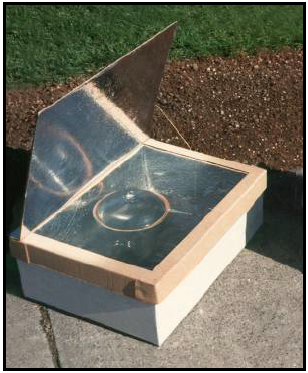Difference between revisions of "Solar Pasteurization"
(→Acknowledgements) |
|||
| Line 14: | Line 14: | ||
==Acknowledgements== | ==Acknowledgements== | ||
| − | * [http://www.google.com/url?sa=t&rct=j&q=&esrc=s&source=web&cd=2&ved=0CFMQFjAB&url=ftp%3A%2F%2Fftp.wpro.who.int%2Fscratch%2FENH%2FHWTS%2FWHO%2520Final%2FParticipant%2520Manual%2FAppendices%2FParticipant%2520Manual_Appendix%25202_HWTS%2520Fact%2520Sheets_2011-09-05%2F4_Disinfection%2FHWTS%2520Fact%2520Sheet_Solar%2520Pasteurization_2011-06.doc&ei=tkW1T9y3HfLXiALHx4mjBA&usg=AFQjCNHPXtJ2aj8ruMEzIMc0XxNLwdPLnQ&sig2=yivwN1sV477cklNzUGhFpQ Household Water Treatment and Safe Storage Factsheet: Solar Pasteurization.] CAWST, 2009. | + | * [http://appropriatetechnology.wikispaces.com/file/view/HWTS+Fact+Sheet_Simplified_Solar+Pasteurization_Jul+09.pdf] or ([http://www.google.com/url?sa=t&rct=j&q=&esrc=s&source=web&cd=2&ved=0CFMQFjAB&url=ftp%3A%2F%2Fftp.wpro.who.int%2Fscratch%2FENH%2FHWTS%2FWHO%2520Final%2FParticipant%2520Manual%2FAppendices%2FParticipant%2520Manual_Appendix%25202_HWTS%2520Fact%2520Sheets_2011-09-05%2F4_Disinfection%2FHWTS%2520Fact%2520Sheet_Solar%2520Pasteurization_2011-06.doc&ei=tkW1T9y3HfLXiALHx4mjBA&usg=AFQjCNHPXtJ2aj8ruMEzIMc0XxNLwdPLnQ&sig2=yivwN1sV477cklNzUGhFpQ alternative link DOC file]). Household Water Treatment and Safe Storage Factsheet: Solar Pasteurization.] CAWST, 2009. |
Revision as of 23:49, 27 November 2012
| |
Pasteurization is the process of disinfecting water by heat or radiation, short of boiling. Typical water pasteurization achieves the same effect as boiling, but at a lower temperature (usually 65-75°C), over a longer period of time.
A simple method of pasteurizing water is to put blackened containers of water in a solar cooker. The cooker may be an insulated box made of wood, cardboard, plastic, or woven straw, with reflective panels to concentrate sunlight onto the water container. It may also be an arrangement of reflective panels, or a reflective “satellite dish”, on which the water pot sits.
A thermometer or indicator is needed to tell when sufficient temperature is reached for pasteurization. Common devices for monitoring the water temperature use either beeswax, which melts at 62°C, or soya bean fat, which melts at 69°C. A simple device known as the Water Pasteurization Indicator (WAPI) has been developed at the University of California.
Manuals, videos, and links
- Solar Water Pasteurization. Solar Solutions. 2010.
Acknowledgements
- [1] or (alternative link DOC file). Household Water Treatment and Safe Storage Factsheet: Solar Pasteurization.] CAWST, 2009.

